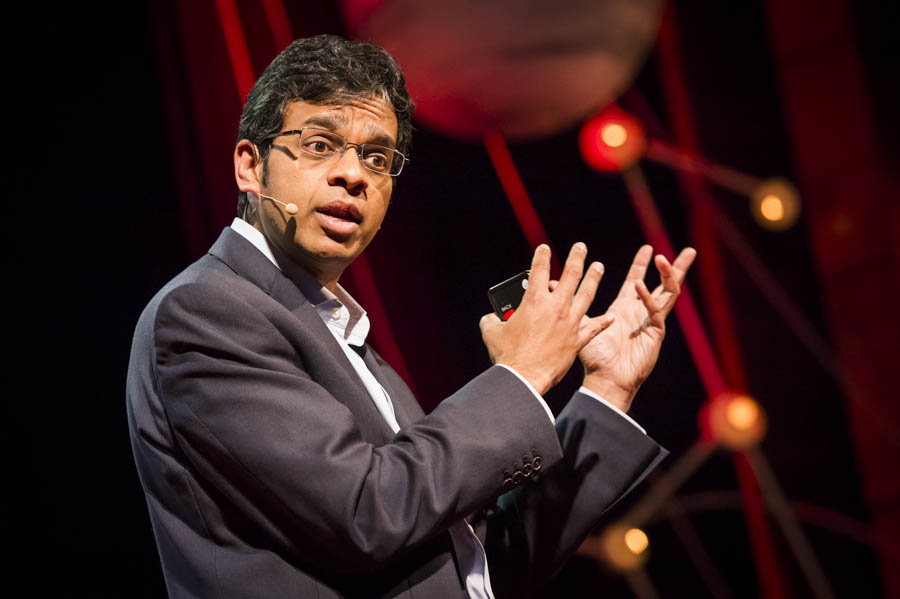Regenerative neurologist Siddharthan Chandran asks whether we can repair the damaged brain. Here’s the problem: Humanity is facing an epidemic of fast-progressing, devastating neurological disease such as Alzheimer’s, motor neuron disease, Parkinson’s, multiple sclerosis and Huntington’s. Collectively, this is one of the biggest public health threats of our time. Over 35 million people are affected, and the global annual cost is $700 billion and rising — greater than 1% of global GDP.
Chandran shows two clips of one of his patients, John, who, speaking through a respirator, explains that difficulty breathing in 2011 led to the diagnosis of motor neuron disease. In the second video, 18 months later, he explains that weakness in his legs means he now often uses a wheelchair, illustrating not only the devastating consequences but the shocking pace of the disease — a fit adult man rendered chair and respirator dependent in 18 months.
How does it happen? Chandran explains that the brain is “terribly simple,” made up of four kinds of cells — some nerve cells and some insulating, or myelin, cells. “When they work together,” says Chandran, “they create an extraordinary sympohony of electrical activity” that allows us to feel and emote. But each of these cells can “go rogue or die,” resulting in damaged wiring and disrupted connections, damage that ultimately manifests in disease.
Chandran believes that hope lies in a new discovery — that the brain can spontaneously repair itself, an important fact that challenges old medical orthodoxy. So it can, but it just doesn’t do it well enough to overcome disease. He shows an image of a brain affected by MS, where damaged cells on the brain are being spontaneously repaired — not by doctors, he says, but in spite of them, because stem cells in the brain are allowing new myelin to be laid down over the damaged nerves.
He asks why, if we’ve known this for a long time — and we have — are there no treatments? Because drug development is expensive and time-consuming and risky. The odds of isolating a treatment are 10,000 to 1, costing 15 years and $1 billion — and even then there’s no guarantee.
Can we shorten the odds? Yes we can, says Chandran, but we have to consider the point of failure. The problem, he says, is that traditional development requires isolating five compounds from 10,000, which are then sent to clinical trials, which are first done on animals. Why not use stem cells to bypass animal trials? After all, he says, quoting Alexander Pope, “The proper study of Mankind is Man.” We can now do this thanks to stem cells. Stem cells can do two things: they can self-renew, and they can specialize – they can give rise to any other cell, whether a motor nerve cell, a skin cell, a liver cell, and so on.
Over the last few decades, but especially in the past 10 to 15 years, major developments are allowing us to harness this ability. Dolly the sheep was the first example of an animal cloned from an adult cell. Then, in 2006, Shinya Yamanaka made an even bigger breakthrough, showing that four ingredients could effectively convert any adult cell into a master stem cell, effectively generating a personalized tissue-repair kit of pluripotent cells.
How can easily-pluripotent stem cells be useful for repairing the damaged brain? There are two ways. First, we can discover new drugs in a dish. Take a patient skin sample, reprogram it to make pluripotent stem cells and drive it to make a motor nerve cell, and ask how it compares to a healthy counterpart cell from a relative with a close genetic match. Comparing the health of the cells, one could observe, for example, that the unhealthy cell is 2.5 more likely to die than the healthy counterpart — a perfect assay for drug discovery. Using a high-throughput screening system, you can seek the drug that might be the most effective, and take it directly to human trial, bypassing animal testing. We can also use stem cells to repair damage, whether by activating those already in our brains to respond appropriately to damage, or by transplanting stem cells directly to replace dead or dying cells in the brain.
To close, Chandran cites an experiment investigating whether the stem cells grown from patients’ bone marrow could promote repair of damaged optic nerves in patients with MS. The study measured the size of the optic nerve before and after the stem cell injection. The optic nerve was measured after periodic injections, and Chandran found that optic nerves that had previously been shrinking began to grow. Chandran believes that the treatment was promoting the endogenous stem cells to “wake up” and make new myelin.
With this, the talk ends on an optimistic note. Chandran asked his patient, John, his hope for the future: “I hope that you can come up with a cure so that people like me can live a normal life.” Chandran makes an exciting case that we’ll be able to repair the damaged brain sooner than we think.



Comments (2)
Pingback: Can we repair the brain? A UK research-USA industry collaboration | Pursue natural